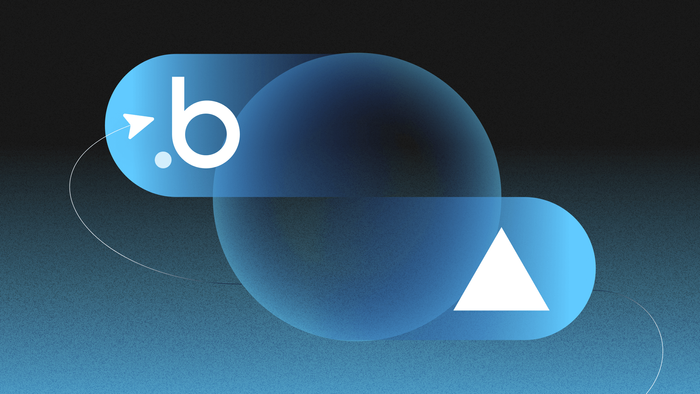No-code was a huge leap forward in making software development available to a wider audience — and now, AI is on the scene and making developing software even easier, faster, and more approachable.
Given the rise in the combination of no-code and AI tools for building software, we knew it was time to test out the most popular options.
Bubble and Vercel v0 are both popular tools for building with AI, so we put them up against one another to see which would perform best for different use cases.
Bubble is an AI visual development platform that allows anyone to build and launch fully functional web apps through visual programming. Bubble’s built-in AI tools help builders escape the blank page and start building faster, while visual programming tools allow you to customize every aspect of your app.
Vercel v0 is an AI-powered coding platform which brands itself as an “always-on pair-programmer.” It features a generative AI chat alongside a visual preview and a traditional coding environment. The AI can generate UI with basic functionality, write and execute code in several frameworks, and provide guidance and suggestions for debugging and code refactoring. Developers can write, edit, collaborate, and deploy code via the manual editor on v0 or through an integrated GitHub repository.
Bubble vs. Vercel v0: Key factors
Before we dive into the Bubble and Vercel platforms themselves, there’s one key factor to consider when choosing an AI builder: the 80% rule.
No set of AI-generated code can take you all the way from idea to fully functional, scalable, profitable app (yet), so it’s crucial to evaluate not just the initial output, but also how well the platform helps you deal with that last 20%. That is:
- How easy does the platform make it to customize your app and iterate over time?
- Do you ever have to deal with code, or can a non-coder understand their app at every point?
- Does the AI cause builders to get “stuck” or do you have full control throughout the whole process?
- Is scaling or building an app on this tool cost-prohibitive due to hidden fees related to AI usage?
If you’re not a developer, these questions are especially important to consider. Users with technical expertise can easily download code and make manual changes as needed when the AI gets stuck, while non-technical users may find themselves in “prompt purgatory” — endlessly prompting the AI but not getting the results they want.
Keep this in mind as you evaluate Bubble and Vercel v0. After Bubble’s AI generates your initial app, you can manage the last 20% easily via visual editor, getting the design and functionality exactly right, without ever touching a line of code. Finishing the last 20% with v0 will likely require some degree of custom code.
Here’s a quick look at some key factors and comparisons:
| Feature | Bubble | Vercel v0 |
|---|---|---|
| Initial output quality | ⭐⭐⭐⭐ | ⭐⭐ |
| Design capabilities |
⭐⭐⭐⭐ Responsive design and drag-and-drop visual editor to make pixel-perfect UI, but missing AI-powered iterative editing. |
⭐⭐⭐ Responsive design but limited visual editing capabilities. |
| Collaboration |
⭐⭐⭐⭐⭐ Real-time collaboration with manageable permissions. |
⭐⭐⭐⭐⭐ Real-time collaboration capabilities. |
| Backend and database support |
⭐⭐⭐⭐⭐ Native backend and database that doesn’t require technical expertise or extra costs to set up. |
⭐⭐⭐⭐⭐ One-click deployment and native hosting. |
| Security and compliance |
⭐⭐⭐⭐ Bubble offers enterprise-grade security features, including SOC 2 and GDPR compliance, advanced encryption and monitoring, and custom privacy rules. |
⭐⭐⭐⭐ v0 offers strong security, but it requires more technical expertise to set it up. |
| Deployment/hosting |
⭐⭐⭐⭐⭐ One-click deployment and native hosting. |
⭐⭐⭐⭐⭐ Non-developers may face a difficult learning curve. |
| Technical expertise |
⭐⭐⭐⭐⭐ Best choice for non-coders. |
⭐⭐⭐ Non-developers may face a difficult learning curve. |
Vercel v0 is built for developers, helping to speed up workflows and provide support via AI. For that purpose, it works well. It also focuses on frontend design only, which makes it difficult to use for building full-stack, fully functional apps. Anything backend-related has to be added manually, which can create a lot of roadblocks for non-coders.
If you’re a non-developer serious about building and scaling your app, Bubble is the best choice for you. Built for speed and scale, Bubble provides a visual editor that ensures no-code stays codeless, while giving you full control and customization. It also offers an all-in-one environment where you can go from generating code to building and customizing a fully functional app to launching and scaling.
Bubble also offers production-grade tools like privacy tooling, enterprise-grade scaling and security, and built-in databases and hosting. Even better, you don’t have to pay for anything until you’re ready for launch.
Initial output quality
The first — and perhaps most obvious — point of comparison between AI app builders is the quality of their initial output. Of course, there’s always room for iteration and improvement, but how far does the AI output get you? Does it need lots of debugging and refactoring, or does the code mostly “just work”? How well does the AI interpret prompts?
That’s what we tested and reviewed first.
Bubble AI-generated apps
We asked eight different users who were building AI-generated apps with Bubble to analyze output quality in seven core areas.
Here’s how Bubble scored — before the recent improvements from Claude 3.7 and the launch of image generation:
- Color, branding, and consistency: 3 / 5
- Spacing and layout: 4.5 / 5
- Copy, content, and context: 4 / 5
- Navigation and orientation: 4 / 5
- Readability and typography: 4.5 / 5
- Feature completeness: 3.5 / 5
- Feature functionality: 3 / 5
Bubble’s AI app generator just got even more powerful with Claude 3.7 Sonnet. Prompted yesterday? Try again now 😏 pic.twitter.com/uG0C6OGRGi
— Bubble (@bubble) February 25, 2025
In our testing — and based on feedback from these users — Bubble consistently delivered excellent UI, with high rankings across the board for elements like spacing and layout, navigating, readability, and copy. Users agreed that Bubble’s AI accurately interpreted their prompts without too much effort and the frontend looked great from the first try.
Where Bubble really stood out compared to other apps we tested was with the backend and functionality it generated. For example, Vercel’s v0 didn’t generate real functionality, logic, or anything backend-related. Bubble’s built-in databases meant the AI could effectively add working functionality from the first go, not just UI elements.
This is the tricky part, though, and our testers were split on how well Bubble’s AI performed with feature completeness and functionality. Some gave Bubble top scores in these areas, saying that Bubble’s AI generated all the features their app needed and they worked perfectly. Others said that their app needed more iteration for feature functionality after prompting.
In general, this makes sense, as more complex app ideas are almost certain to need more iteration no matter what platform you use. That said, Bubble’s AI gets you about 80% of the way there in about five minutes, which gives you a huge leg up on development.
Vercel v0 AI-generated app quality
v0 app quality was not as impressive compared to Bubble or other apps we tested.
For one thing, it took several tries to get v0 to generate error-free code that would load in the visual preview. At first, we got a bunch of code and simply a 404 page in the preview.
We asked v0 to fix this via the AI chat, and this was the initial output we got:
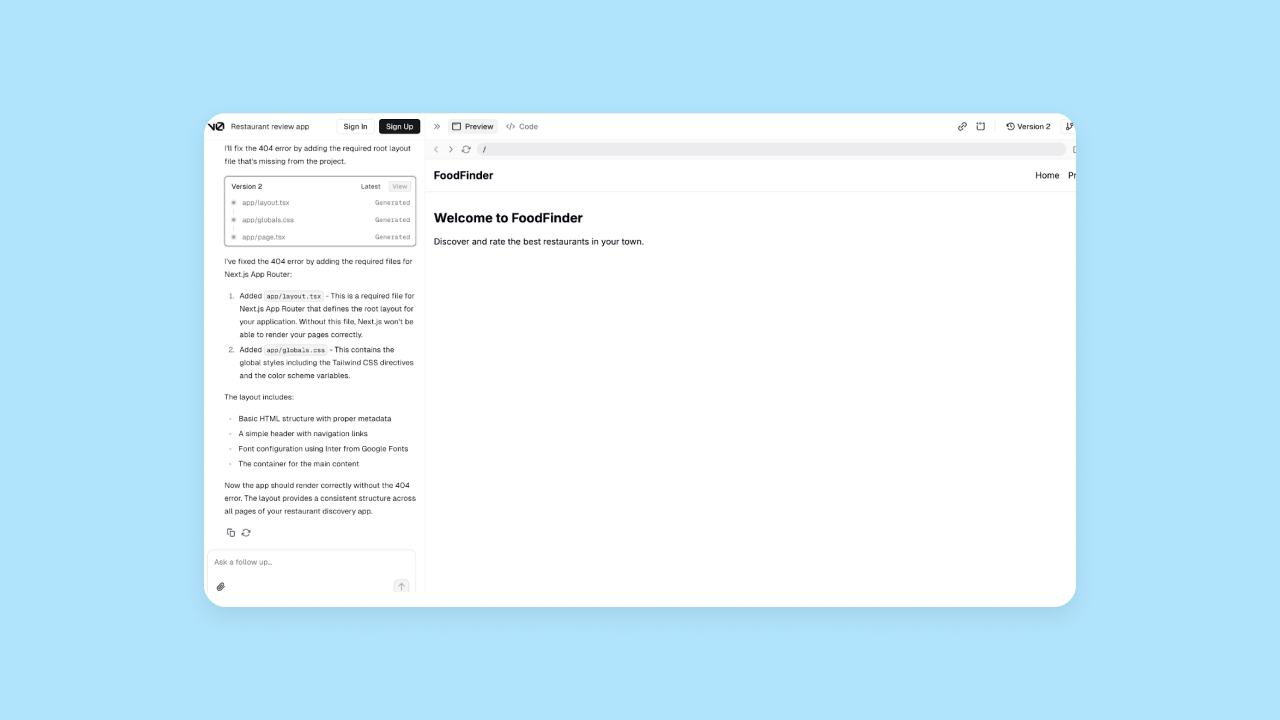
Only the very, very basics would load, despite hundreds of lines of code. After several rounds of iteration and more detailed prompting (and several more error pages), we finally got this output:
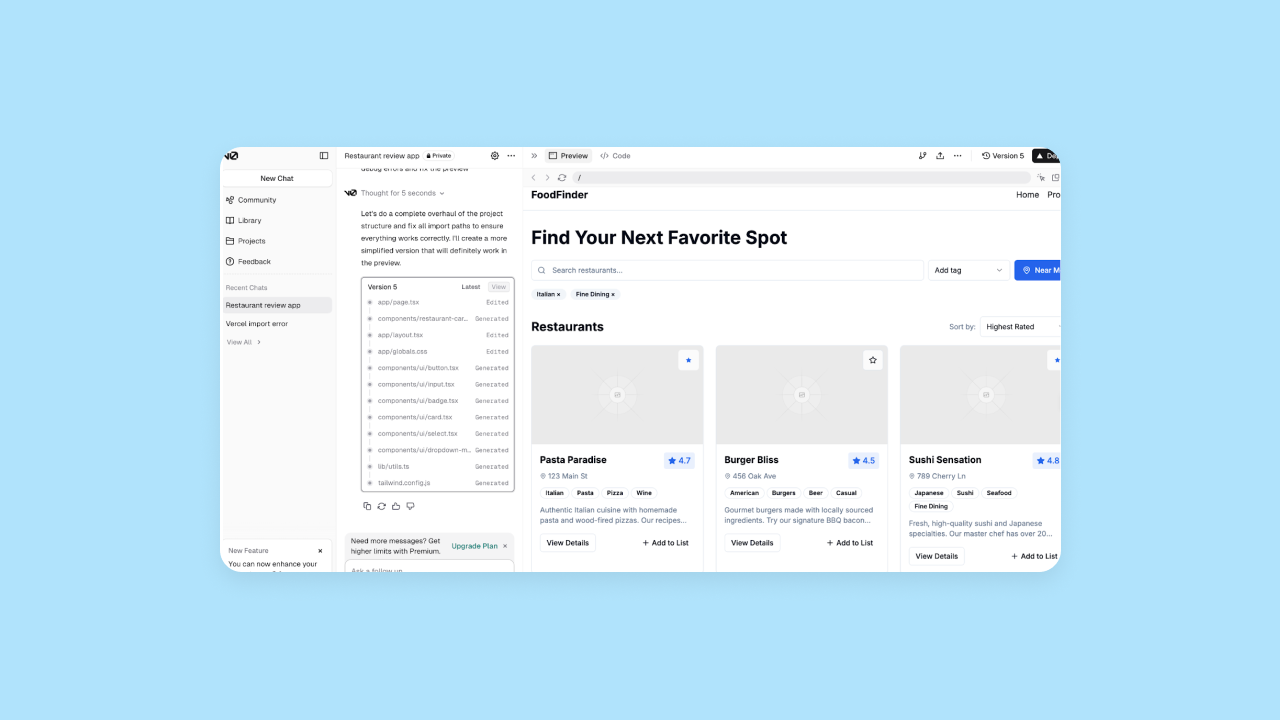
The UI is fine, but nothing special. v0 eventually did give us the UI of most features we asked for, but many features and pages were still missing (i.e., the restaurant cards wouldn’t open to show details, there weren’t profile pages or list pages, etc.).
One of our testers said:
“v0 didn’t do a great job following my prompts. In some versions, [the output] was okay, in later, more complicated versions, there are obvious issues. [For example,] not all buttons link as expected, it didn’t come fully baked, some features “work” in terms of the UI updating while on that page, but there was no backend, and other features aren’t fully implemented.”
Which has better inital output quality?
Bottom line: Bubble’s app output quality was much more complete and functional than v0’s. v0 had inconsistent output (sometimes it worked, sometimes it didn’t), while Bubble generated strong UI and mostly functional workflows and logic on the first try.
App development workflow
What’s the actual process of creating an app with Bubble AI vs. Vercel v0? That’s what we look at in this section.
How to create an app with AI on Bubble
Creating an app with Bubble AI has three basic steps:
Step 1: From the AI app generator, input a prompt that provides a concise description of your app along with key features.
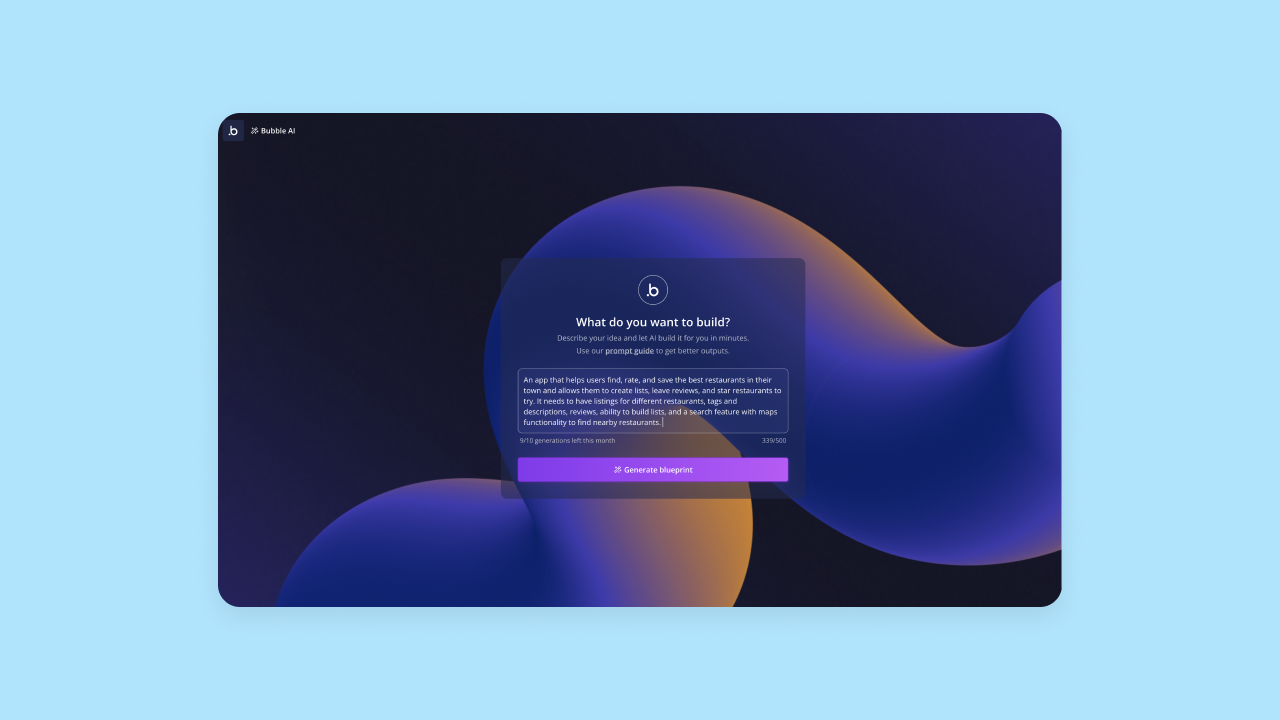
Step 2: Bubble AI will interpret your prompt and double-check with you by giving you an outline of key features. If it didn’t quite capture your vision, you can edit this or add additional features at this stage. When the outline looks good, click Generate to generate your actual app.
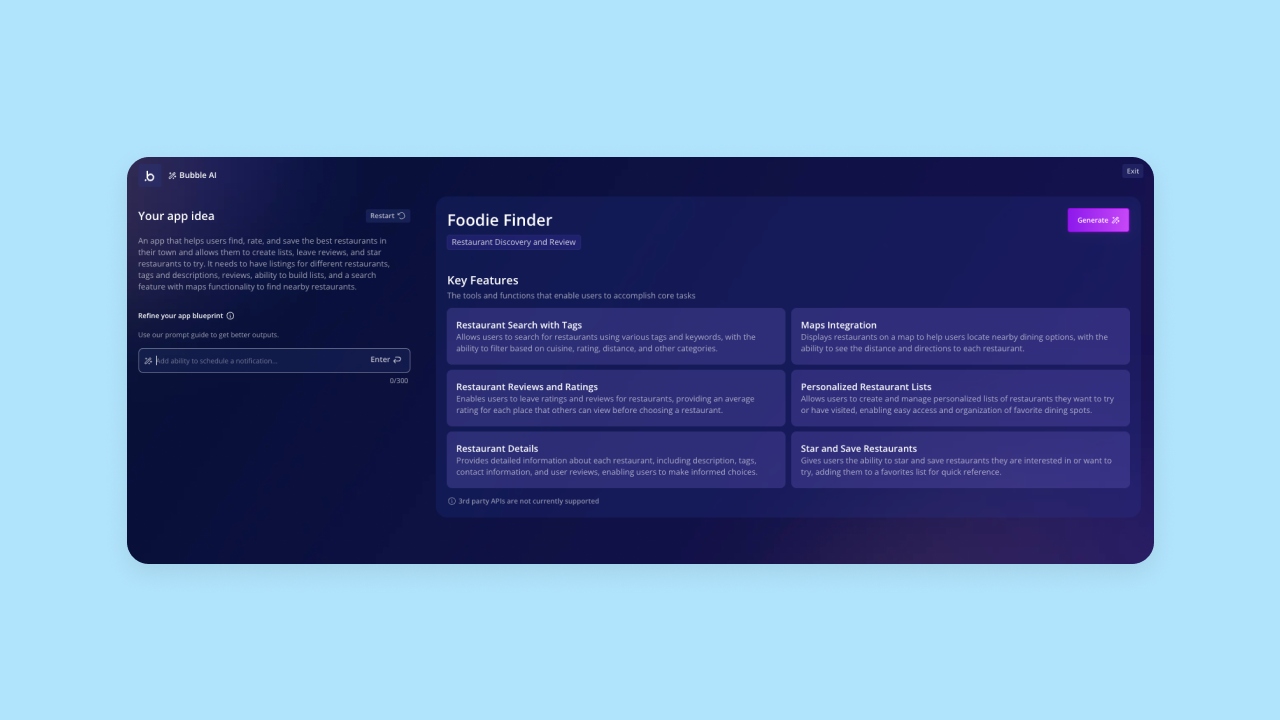
Step 3: It takes Bubble AI about 5–7 minutes to create the first draft of your app. You’ll get a functional app that includes frontend UI, backend databases with sample data, and workflows. The features and functionality on your app should already work and be ready for more data and iteration.

You can see individual pages, workflows, and databases — and everything that’s been created in each — by toggling between editor sections on the left-hand toolbar. Everything is edited and managed visually, so you have full visibility and control of every piece of your app, without having to dig into the code.
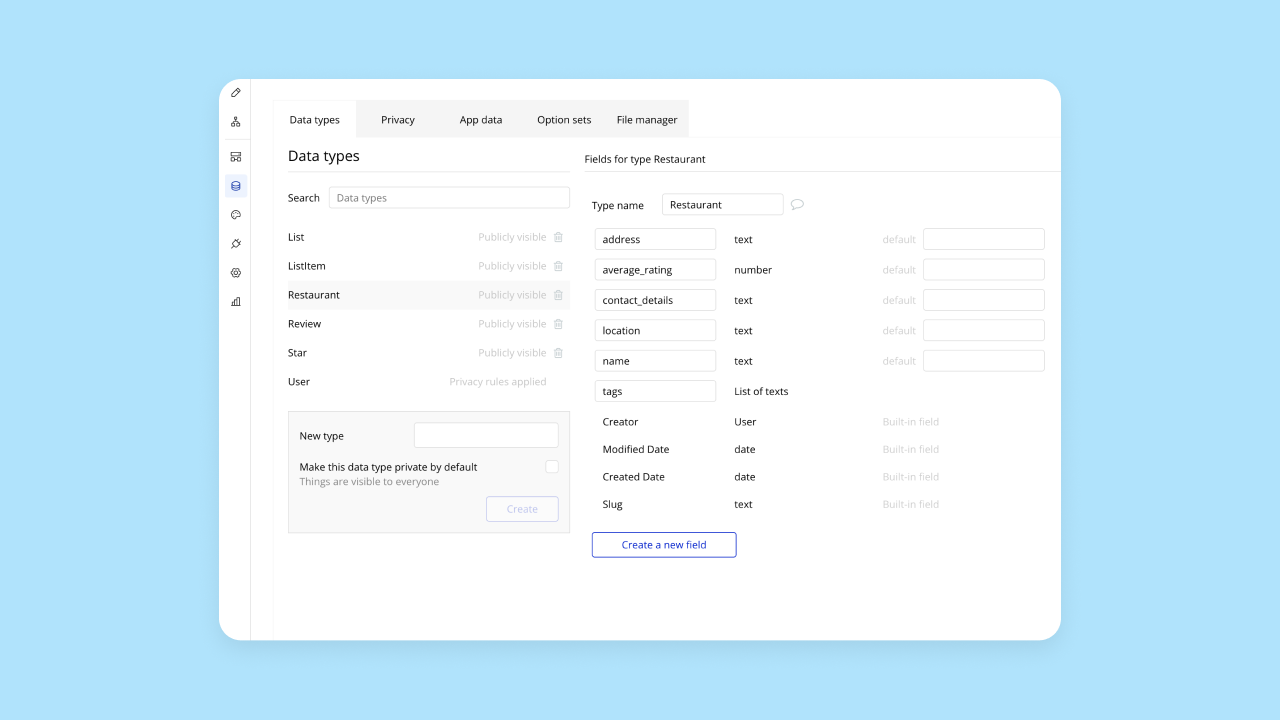
How to create an app with AI in Vercel v0
Vercel v0 had a similar app development workflow as other builders. Here’s how it works:
First, you’ll input your prompt as usual.
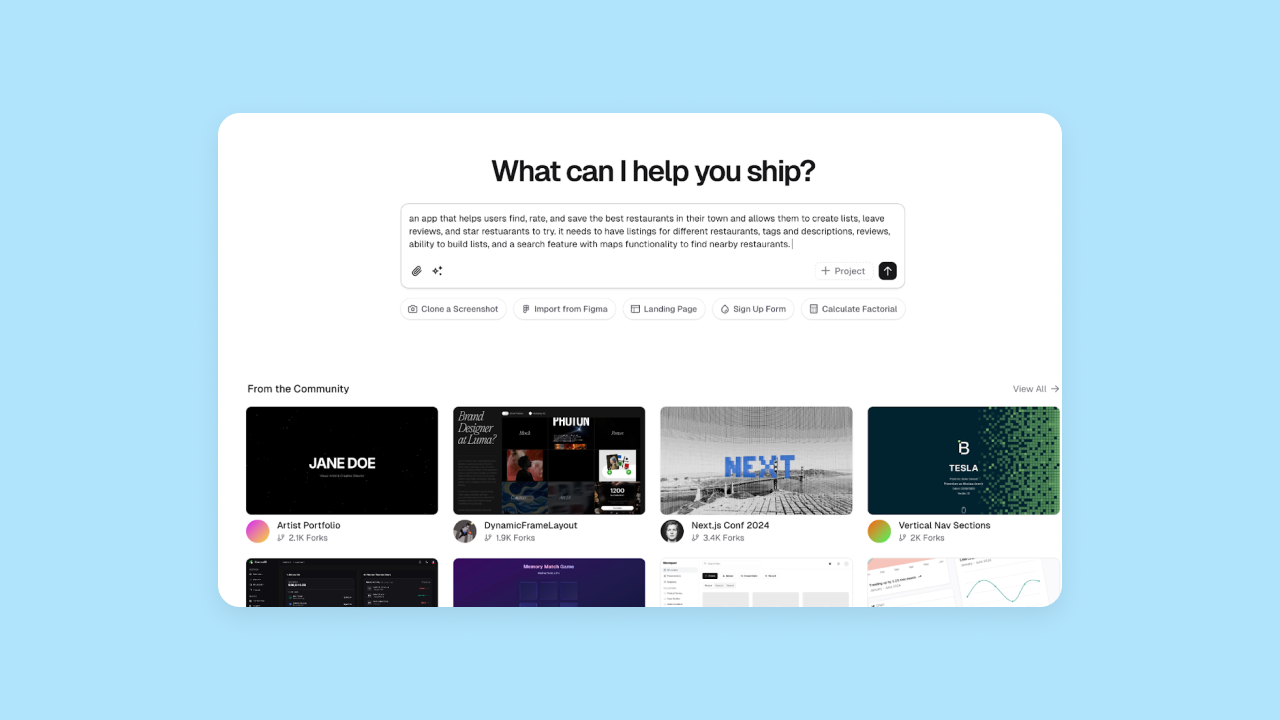
v0 immediately starts spinning up the code. It spent less time thinking and delivered the first iteration faster compared to other apps.
Visually, the development environment looked very similar to Replit and Bolt. On the left-hand side, you see the AI chat and on the right-hand side, you have a coding environment and a visual preview.
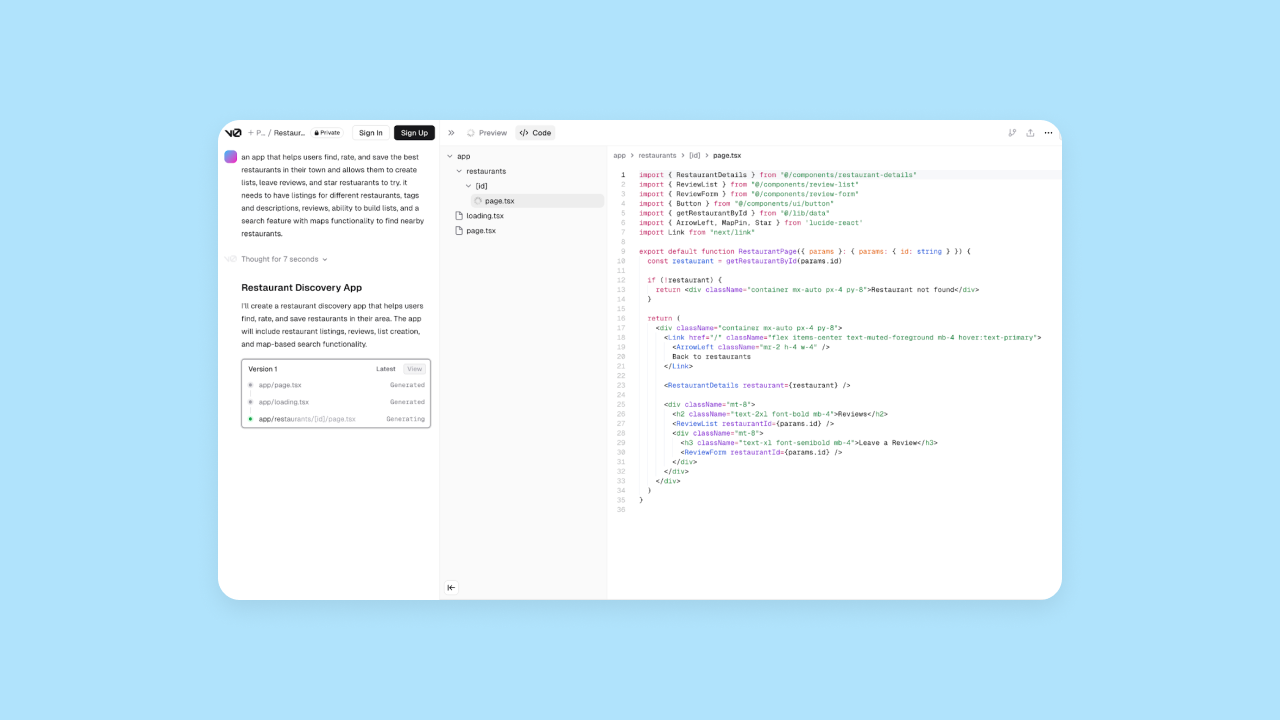
Once we’d gone through a few rounds of iteration and got the AI to generate functional output for us, you could see both the code and the visual preview, and continue iterating either directly in the code, manually, or via the AI chat.
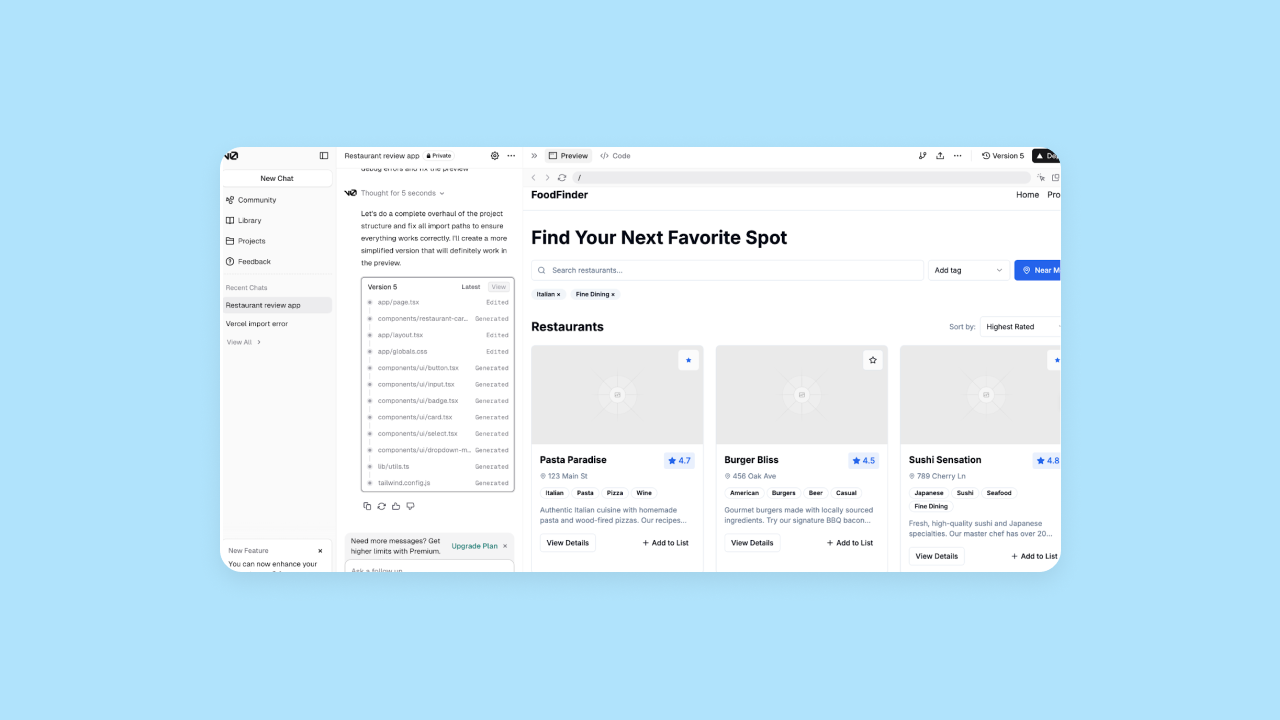
The process was fine on the surface, but we found that it took a significant amount of prompting and iteration to get close to Bubble’s initial output. And even then, the output still wasn’t as complete as Bubble’s. For instance:
- Some pages and features were still missing, even after several rounds of prompting. Many links didn’t go anywhere (i.e., the restaurant cards didn’t open, and there were no profile pages built.)
- The UI “worked” visually, but there was no database or logic set up. It was more of a sandbox or MVP tester than a fully-functional app builder.
Design functionality
Beyond the initial output of your app, we wanted to test how each platform stacks up in terms of design.
- Can you create responsive designs?
- Is there a drag-and-drop visual editor?
- Is the experience truly no-code or do you need some technical expertise to finalize the design of your app?
Bubble design features
Bubble offers strong design features via the visual editor to make for a truly no-code experience. For starters, Bubble supports responsive design automatically, making it easy to create designs that look flawless on web, mobile, and any screen size. If you want, you can also set manual breakpoints and layouts for additional control, without having to code.
Bubble’s visual, drag-and-drop editor is also a game-changer. The flexibility you get without code allows anyone to have complete design control, which speeds up development and prevents you from getting stuck in AI prompting loops. Even complex customizations and pixel-perfect designs can all be created and managed visually.
Plus, if you already have designs in Figma or another tool, you can import those designs directly into Bubble and convert them seamlessly into a functional app.
Vercel v0 design features
v0 design features are pretty standard compared to other AI app builders we tested. v0 supports responsive design, but it doesn’t offer much else on the design front.
All design and UI changes are made via the AI chat or the code — there’s no visual editor or any drag-and-drop functionality.
v0 does integrate with Figma to allow you to upload mockups or screenshots for it to turn into code. However, our testers had mixed reviews on the accuracy of this feature. One of our testers noted that “Vercel didn’t do a great job following my prompts. I gave it an image to use as guidance for the style and it sort of did it, but also used the image itself as the background.”
Which has better design features?
Bottom line: Bubble offers stronger design features. v0 isn’t built as a design-heavy tool, so while it allows for design through the code, and minimally, through the AI chat, Bubble provides a fully visual, drag-and-drop editor to give you complete design control.
Mobile app development
Responsive design is a good first step to capturing some mobile traffic, but being able to offer native mobile apps is a much better solution for most brands. We looked at which platforms support mobile app development and what capabilities are available.
Mobile app development on Bubble
Native mobile app development is currently in beta and available to all Bubble users. Bubble’s familiar visual no-code editor supports both web and mobile apps, eliminating the need for multiple platforms and reducing the learning curve and time needed for building.
Bubble’s mobile app editor includes the ability to create React Native apps without code and adding native mobile elements, gestures, and functionality all from the Bubble editor. For example, you’ll be able to:
- Build from mobile-specific building blocks, rather than working from web pages and designing responsively.
- Develop common mobile navigation patterns, like stack navigation (swiping or tapping), modal screens (pop-up screens over the main view), and bottom sheets (elements that slide up from the bottom of the screen).
- Add mobile-friendly interactions like swipe, long-press, and tap.
- Incorporate native device features, such as access to the camera, microphone, photo library, push notifications, and more.
Plus, you can preview and test everything using BubbleGo, our app for mobile testing. Then, publish your app directly to the Apple App Store and Google Play Store right from the Bubble editor.
Mobile app development on Vercel v0
v0 doesn’t specifically support mobile app development yet. It also doesn’t support React Native frameworks, meaning you won’t be able to create specific mobile features or functionality directly through v0.
You can use v0 to generate React or Next.js code, which can then be converted to native mobile app frameworks like React Native with some technical expertise. But if you’re looking to build true mobile apps with v0, you’ll need to export your code and iterate on the code manually to create a native mobile app based on the existing functionality.
Which is better for mobile app development?
Bottom line: Bubble has the clear advantage for mobile app development with AI, given it's native mobile app builder. While both platforms support responsive design for mobile web, v0 doesn’t offer true native app development.
Customizability
No app — whether human-made or AI-generated — is going to be ready to ship on the first try. Customization is key to making the app exactly what you have in mind. So how do these two platforms stack up in terms of customization?
Customization on Bubble
Customization is a huge strength for Bubble. And now with AI, builders get even more tools to leverage the flexibility, control, and customization Bubble has always been known for.
On Bubble, you get nearly limitless customization options, plus the flexibility to work in a way that makes sense for you and your level of technical knowledge. If you want to use custom code, Bubble supports it. If you would rather start with AI or a template to just move forward quickly, that’s supported too.
And you always have the option of using Bubble’s visual, drag-and-drop editor to make everything exactly as you envisioned it, from the look and feel of your app down to complex logic and workflows. Bubble’s visual editor gives you full control over UI design, workflows, triggers, actions, data types, database structure, conditionals, and more. Plus, you can add reusable styles and elements to further speed up your design and development.
The great thing about Bubble is that the AI tools never lock you in to a single way of working — instead, they work with the visual editor to give you more ways to speed up your workflow and overcome the initial blank page.
In short: Bubble gives you full control and customization options in every part of your app’s frontend and backend, and supports all of it visually — no code needed.
Customization in Vercel v0
v0 offers complete customization via manual coding, but that’s not unique to the platform — you could achieve that by writing code traditionally too. So where do v0’s customization options show up?
v0 offers some customization via the AI chat, but as with any LLM right now, it can be difficult to prompt it and consistently get the output you’re expecting. One benefit they do offer is that you can select specific elements to customize or change, focusing the AI’s output on a specific area and reducing the likelihood that the AI will break something else in the process.
However, it’s currently pretty difficult to achieve something complex in v0 without technical expertise. v0 isn’t designed to be an all-in-one, full-stack app builder. Most of the use cases showcased in their templates and on their community pages are dashboards, landing pages, portfolios, and simple tools.
v0 doesn’t claim to be more than an assistant, either. Vercel describes v0 as a great way to support debugging, plan new features, streamline development, spin up landing pages or demos, or create interactive mockups or prototypes.
So in short: There’s some customization offered, particularly if you have the technical expertise to manipulate the code directly, but v0 isn’t a full-stack platform designed to help you customize and create anything you can imagine.
Which offers stronger customization?
Bottom line: Bubble wins on customization by far. Bubble is designed for anyone to be able to build anything you can think of without needing traditional programming — and without having to rely on AI for every customization. AI + Bubble gives you speed, but the visual editor is still there for you to have complete control and customization without code.
v0 offers some level of customization via AI or traditional coding, but the platform isn’t designed to support complex app development or complete customization. It’s more designed as an assistant for larger development projects or quick prototypes.
Collaboration
With AI, building apps as a team of one is easier than ever.
But if you’re looking to build, launch, and scale a customer-facing product or enterprise tool for your internal team, you’ll likely want more than one person to be able to work on it, iterate, and help you improve the app. This section compares how each of these tools support collaboration.
Collaborating on Bubble
Collaborating on Bubble is super simple. Bubble is designed for professional use, so you’ll find all the collaboration tools you need, depending on your plan, including:
- Adding as many users as you need to collaborate on apps with you.
- Inviting different users to different apps you own.
- Setting individual access permissions for each users, including managing edit access to different elements of your apps.
- Collaborating and working together on an app in real-time.
Collaborating in Vercel v0
v0 also offers some collaboration features. Keep in note that you do need to be on a Team or Enterprise plan to have access to these.
v0 allows you to connect your code to a Git repository, allowing seamless collaboration via GitHub. All changes are automatically published to your Git repository, which ensures you and your team stay on the same page.
One collaboration feature that many other builders don’t yet offer is commenting. With v0, you can share preview deployments via Vercel with team members, friends, shareholders, or anyone you’d like. They can add comments, which you can then view from your v0 editor.
Which is better for collaboration?
Bottom line: Both tools provide good collaboration options. v0 uses a more traditional programming setup, with shared Git repositories and commenting features. Bubble takes a simpler collaboration approach, allowing you to add anyone you’d like to your apps to either view or edit as you wish, right in the Bubble platform.
Framework support
Some platforms generate code in one specific programming language, which can be limiting for traditional developers who may want flexibility in their tech stack. In considering what frameworks your platform supports, you can choose a platform that aligns with your tech stack.
Bubble framework support
Bubble uses a visual programming language that’s unique to the Bubble platform. This is great for non-coders — you don’t have to know any coding languages to build, test, iterate on, debug, or scale your app. Everything is done visually through Bubble’s drag-and-drop editor.
Even better: Since Bubble is a full-stack solution, you don’t have to worry about connecting it to external backends or exporting your code for deployment elsewhere. Everything is done “out of the box” right on Bubble.
And for technical users who want to use code, don’t worry — you can add custom code via the Bubble editor.
Vercel v0 framework support
v0 supports a wide range of the most popular frameworks, including Next.js, SvelteKit, Nuxt, Astro, Remix and a few others. Keep in mind that not all functionality is available yet for every framework — so it’s worth checking Vercel’s framework and support matrix before beginning your project.
Which offers more framework support?
Bottom line: v0 supports more frameworks overall, but Bubble provides an all-in-one platform built on a visual programming language that doesn’t require prior experience or expertise. There’s no right answer to which is better here — just which makes more sense for your project and your needs.
Integrations
It’s not just frameworks you’ll want to consider when thinking about your whole tech stack: integrations make a big difference too.
A tool with a huge library of plugins and integrations can quickly expand the possibilities and capabilities of the platform you’re using — and the app you create. A tool with limited integrations has to stand on its own, or you have to know how to code integrations yourself (and then take on the responsibility of updating and maintaining it).
Bubble integrations
Bubble has thousands of plugins and integrations you can use to build and expand the capacities of your app, including:
- OpenAI & Chat-GPT 4
- Anthropic Claude AI
- DALL-E
- Github
- Figma
- Stripe
- Paypal
- Google Suite products
- and thousands more
Even better, all of Bubble’s dedicated integrations and plugins are built and maintained by expert developers. You get the benefit of the plugin’s features, plus the security of an expert maintaining and updating it.
If you want to set up your own integrations, you can easily connect any service or platform to your Bubble app via our API connector. Input the API token on your Bubble backend and create your own integrations to whatever tools you need.
Vercel v0 integrations
v0 has a number of native integrations too, but nowhere near as many as Bubble does. Native integrations v0 offers include OpenAI, Perplexity, Contentful, Shopify, Supabase, and a few others.
Which has stronger integrations?
Bottom line: Bubble provides substantially more built-in integrations you can use to build and extend the capabilities of your app. v0 offers a few, but native integrations are, so far, pretty limited.
Iteration and optimization
There are two types of performance improvements a tool might offer for your app: code optimization and code iteration.
Code optimization — also known as code refactoring — is when you adjust code that’s already working to improve efficiency or make it easier to debug or manage. You’re not changing what the code does, you’re just making it more streamlined. Refactoring is even more important when building with AI, as AI code tends to be bloated and buggy.
Code iteration is changing or adding new code to include additional features or updated functionality in your app. Some AI app builders allow you to iterate on your code and add new features with AI, some require you to do this manually, and others offer multiple options for code iteration.
Bubble optimization and iteration
On Bubble, refactoring isn’t necessary. Since your app’s logic is handled through Bubble’s visual programming language, traditional code refactoring isn’t part of the process. This can be a big time-saver! Sometimes, as businesses grow and scale on Bubble, they want to find ways to make their app run more efficiently to optimize costs. If and when you reach this point, you’ll find plenty of ways to do this from our community or through our resources — but it’s not a must from day one like it is with code.
Iteration happens via the visual editor. Currently, Bubble doesn’t support AI-powered iteration, but it’s coming soon! For now, you can use the drag-and-drop editor to manually add and adjust functionality, features, UI, UX, workflows, logic, and everything else related to your app.
Bubble’s visual editor can be a major advantage over only having access to AI iterations. You get to build on a platform you understand, rather than just generating code you don’t. And you get full control via a visual editor to make any change you want, exactly how you want it.
Vercel v0 optimization and iteration
v0 offers both AI-driven iteration and some optimization capabilities.
AI-powered code iteration on v0 happens via the AI chat. You can prompt the AI with additional features or changes to the UI that you want. In our experience, the output of these prompts was mixed. In some cases, the AI iteration broke code that was previously working or misunderstood the prompt, while in other cases it worked well.
You can also use v0’s AI chat to help with code optimization, such as asking for assistance with debugging, finding and fixing errors, or providing code suggestions and best practices. For example, Vercel touts that v0’s AI assistant can help optimize code with prompts like, “Optimize the performance of this React component that’s re-rendering too often.”
Of course, this does require some technical knowledge to accurately analyze the code and understand how to prompt the AI, but having the AI assistant can provide speed and support for experienced developers.
Which offers better iteration and optimizations?
Bottom line: v0 is currently ahead in AI-driven iterations, making it a good choice for developers looking for AI-assisted software development. However, iterating on Bubble apps via the visual editor is often an easier route for beginners.
Security
Solid security is an absolute must if you want to build and launch a production-grade app. For this section, we compared how well each platform protects your app data and customer data, what security certifications and features are built-in to the platform, and how easy it is to set them up — even without technical experience.
Bubble security features
Bubble offers strong security out of the box with built-in, enterprise-grade security features that protect both your app data and your end-users’ data. Bubble is SOC 2 Type II compliant, meets GDPR standards, and provides enterprise-grade infrastructure (AWS) and data encryption (HTTPS with SSL encryption and encrypted at rest with AES-256 via AWS RDS).
Put simply: On Bubble, your data is automatically encrypted both when it’s stored and when it’s being sent between users and your app.
Bubble also allows builders to easily set up app-level privacy rules and restrictions, again using the visual editor — so you don’t have to code. Bubble doesn’t define privacy rules automatically, but it guides you through the process of creating and defining privacy rules to make sure that end users are never exposed to app data they shouldn’t have.
Plus, Bubble recently acquired Flusk, which allows you to run automated security checks that scan your app for potential vulnerabilities and alert you before they become problems.
Other built-in security features include:
- Built-in user authentication with options for 2FA, SSO, and more.
- Vulnerability testing
- DDoS protection and Cloudflare blocking to prevent attacks
- Flusk monitoring to identify vulnerabilities and get proactive alerts
Not to mention that Bubble has a strong, established track record of hosting and maintaining apps with thousands of users around the world — a testament to Bubble’s security, stability, and production-grade environment.
Vercel v0 security features
v0 offers strong security features as well. When you build on v0 and launch with Vercel, you get access to Vercel’s security, including:
- SOC 2 Type II compliance and GDPR compliance
- Built-in DDoS mitigation for all apps
- SSO and 2FA available for Enterprise users
- Encrypted storage on Vercel’s cloud servers
However, the process of securing your own app and privacy settings requires a bit more technical expertise. Generated code isn’t secure by default, and v0 doesn’t have guides or settings to walk you through the process of making it secure. You’ll need to understand how to set up user authentication, database security features, and other privacy rules on your own. You’ll also need to review the code manually for security and vulnerability checks.
Which has stronger security?
Bottom line: Bubble and v0 both offer strong security features, but Bubble makes it easier to set them up, while developing a fully secure app with v0 requires some technical knowledge. Bubble’s visual privacy tools also allow non-programmers to set up custom privacy rules for their apps with just a few clicks — no code needed. With v0, the responsibility is on the builder to understand and implement privacy features.
Deployment and hosting
Ideally, a great AI platform will also make it easy to deploy (“push live”) and host your app or website. After all, you don’t want a super easy, no-code building process only to get stuck with a bunch of technical steps at the end trying to share your app with others!
Deploying and hosting Bubble apps
Bubble makes deployment and hosting super easy — everything is built-in, so you can publish your site in one click and host it on Bubble’s servers.
When you’re ready to publish your app, just click the Deploy button in the header nav bar.
All-in-one hosting makes updates and iterations faster, while giving you less platforms to juggle (and pay for!).
Deploying and hosting Vercel v0 apps
v0 also makes deployment and hosting pretty simple — it’s baked into the Vercel platform, although managing it is a bit more technical compared to Bubble. v0 is really only a frontend service, so creating and deploying a fully-functional app requires you to set up a separate backend, which can trip up non-developers in the process of going live.
When you’re ready to go live, though, you can publish your v0 app to a pre-production or production (live) environment. You’ll be able to access these through the “Deployments” dashboard on v0.
Which is better for deployment and hosting?
Bottom line: Both Bubble and v0 have built-in deployment and hosting, which makes the final “go live” process pretty straightforward. Bubble’s deployment process is slightly more geared toward non-developers, while v0’s will feel more familiar to those used to traditional deployment lifecycles.
Education
AI is making software development easier, faster, and more accessible — but that doesn’t mean that you don’t need any technical expertise or knowledge to get the most out of it. And of course, different platforms cater to different users — with some being much more beginner-friendly while others focus on developers. Either way, educational resources to learn the platform and help troubleshoot are key.
In this section, we evaluated the level and quality of education each platform provided.
Bubble education materials
Bubble is home to both developers and builders without technical experience, so over the years, we’ve built out a huge library of educational materials for all levels and learning styles. Between our YouTube channel, resource library, technical manual, and more, you’ll find everything you need in a variety of formats.
If you’re new to building with AI, start with our course for Bubble beginners — we will walk you through the basics of the Bubble platform, our visual programming language, and our AI tools.
For visual learners of any skill level, our YouTube channel is your best bet for getting started. You’ll find hundreds of videos covering everything from in-depth app design courses, bite-size lessons on how to build specific elements on Bubble, AI-app walkthroughs, recaps from our BubbleCon conference sessions, and more.
For those who prefer to read or follow along with a written guide, visit Bubble Academy. You’ll find all kinds of resources, from getting started courses to step-by-step tutorials, one-on-one coaching, bootcamps, and more. If you already have a lot of technical experience, just bookmark the Bubble manual, where you’ll find detailed documentation on just about every aspect of the Bubble platform.
If you get stuck at any point, you can always reach out to our active and engaged community in the Bubble forum for help!
Vercel v0 education materials
v0 doesn’t offer much in the way of educational materials, especially for beginners. The v0 documentation is pretty sparse. The larger Vercel manual is more detailed, but it speaks directly to developers and assumes a technical background.
We did find some helpful third-party resources on YouTube for beginners and non-developers looking to build on v0, but you’ll have to expect a steep learning curve and be prepared to invest more time into finding your own resources.
Which offers better education?
Bottom line: Bubble offers far more educational materials and resources compared to v0. There’s very little technical documentation or guidance on using the v0 platform, and what documentation exists is written for a technical audience. Bubble has a wealth of resources for all skill levels to make it easy to get started and go beyond the basics of the Bubble platform.
Required technical expertise
Even if you use AI to generate your app and most of the code, every platform requires some level of technical expertise to take the app from Day 1 to public launch (see the 80% Rule). But how much technical expertise you need varies a lot from platform to platform.
In this section, we compare how technical each platform is beyond the initial code generation.
Bubble technical approachability
Bubble is designed for everyone, regardless of your technical expertise — and we’ve seen developers, project managers, founders, hobbyists, and everyone in between build successfully on Bubble.
That’s a result of Bubble’s unique combination of a visual development platform with the option for custom coding. It offers the best of both worlds to every skill level, and allows anyone to have full control of their app without needing code.
Of the AI-powered app builders we tested, though, Bubble is the best choice for non-developers. On Bubble, every part of the software development process is accessible for those without a technical background — not just the initial design mockups and MVPs. Because Bubble is built entirely on a visual programming language, you can control your workflows, data, logic, and functionality all visually — no code needed.
Starting with AI on almost any platform gives you a massive head start and speeds up development time exponentially. But Bubble makes it easier and more accessible to go beyond the Day 1 output that AI provides. Though a technical background can make it easier and faster to build on Bubble, someone without a technical background at all can make an app in just weeks on their own on Bubble.
Vercel v0 technical approachability
In contrast, Vercel v0 is designed for developers with technical expertise. It is more suited as an AI assistant to serve as a pair-programmer for an experienced dev than as a copilot for a true beginner.
Although non-developers will be able to create a frontend with v0, it’s best suited for smaller projects like landing pages, dashboards, or portfolios. This is because v0’s AI is great for getting you started with a frontend, but then you’re left to make changes, build out your backend, and connect all the functionality yourself via code. Although you can try to use the AI for each of these steps, the output was inconsistent and it still required a base level of knowledge about the process and what needs to happen next.
In addition, v0 doesn’t have many beginner-focused guides, and it leans into the technical side of the software development process in both the UX of their platform, processes, and more. As a result, it’s not easy to navigate or learn for builders without technical experience and you’ll likely find it challenging to navigate building a fully-functional app.
Which requires less technical expertise?
Bottom line: v0 is built with developers in mind, while Bubble is designed for both developers and non-developers. If you’re a technical developer, v0 provides a strong AI assistant in a built-in IDE, while Bubble provides visual programming that’s accessible to anyone.
Bubble vs. Vercel v0: Which is right for you?
Bubble and Vercel v0 both provide AI-powered app generation that takes just a few minutes and can really speed up development time. However, they’re both suited to very different users and use cases.
Vercel v0 is designed as an AI assistant for creating frontends or quick mockups and interactive prototypes. It’s best suited for experienced developers who are comfortable coding but want to speed up their work with AI. It provides a coding environment, GitHub and backend integrations, and strong collaboration tools, but it would be challenging for a non-developer to build a fully functional app on v0.
Bubble is the only AI-powered visual development program that combines the speed of AI with scalability and control. It gives anyone the ability to create production-grade apps and enterprise software without having to code. Even if you’re a beginner, you get full control and customization through the visual editor, combined with the speed of AI generation to eliminate the blank-page dilemma and introduce you to the platform.
Plus, you get a full-stack platform that includes frontend, backend, and logic, a huge community with tons of resources, and a platform you can understand without a technical background, which makes managing and scaling your app accessible for anyone.
Where AI hits a wall or leaves you stuck in prompt purgatory, Bubble gives you full control without the guesswork or manual coding.
Curious how other no-code AI builders stack up? Check out our other comparisons:
Of course, the best way to get a feel for a platform is to test it out for yourself. See how Bubble AI works and start building in our visual editor for free →
Build for as long as you want on the Free plan. Only upgrade when you're ready to launch.
Join BubbleLATEST STORIES
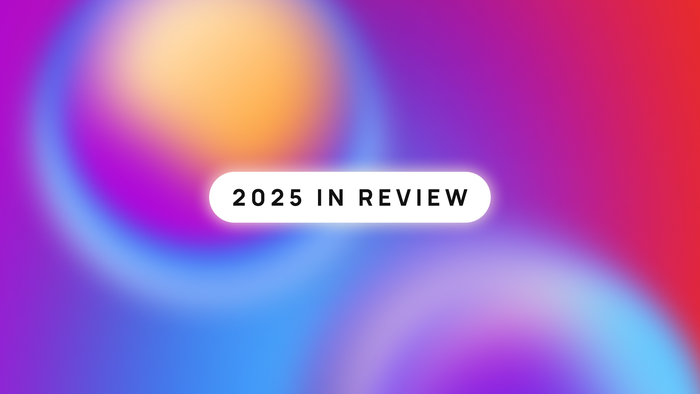
Bubble Wrapped 2025: Recap of Our Year of Building Together and Community Awards
From AI agents to native mobile apps, 2025 was a year of serious building. Explore our building stats, celebrate Community Awards winners, and see what we’ve accomplished together.
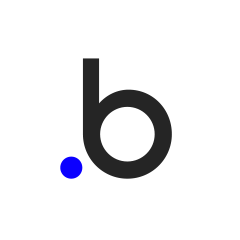

AMA Recap: Emmanuel on AI Agent Expansion, Mobile Priorities, and Platform Updates
Emmanuel answered questions on the AI Agent roadmap, including when it's coming to existing apps, plus updates on mobile, workload units, and what's ahead for Q1.

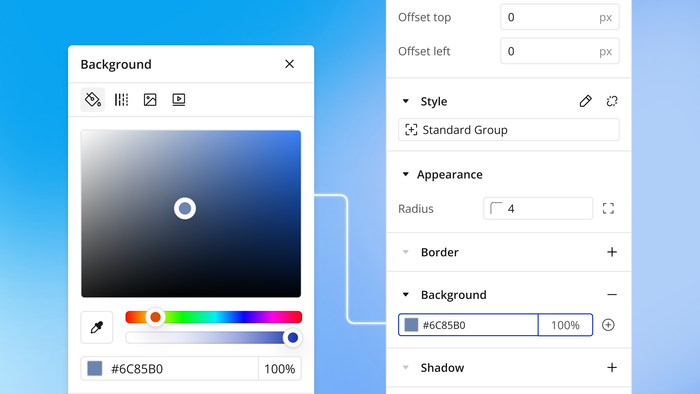
See How We Redesigned the Property Editor for Better Building
The redesigned property editor makes Bubble more intuitive for new builders and more efficient for experienced ones. Learn what changes to expect.

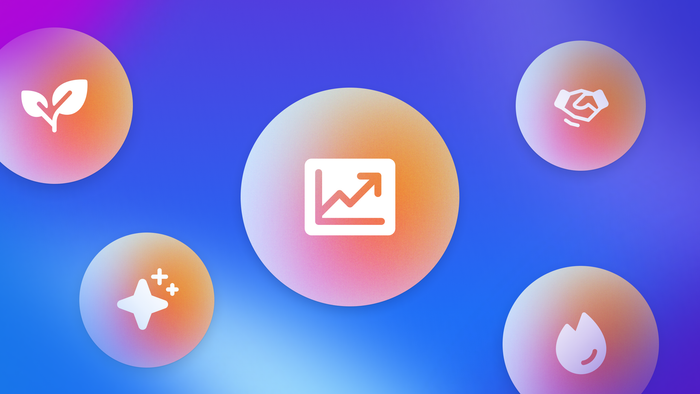
Meeting the Moment: What It Actually Takes to Evolve in the AI Era
We asked every employee to recommit to our vision of replacing code with AI visual development. 95% chose to stay. Here's why that matters.

